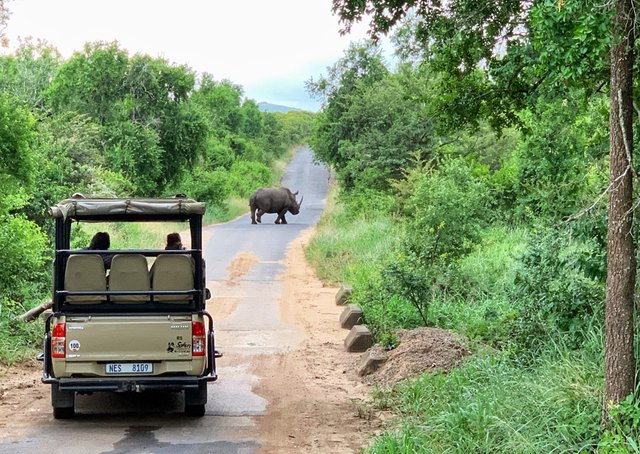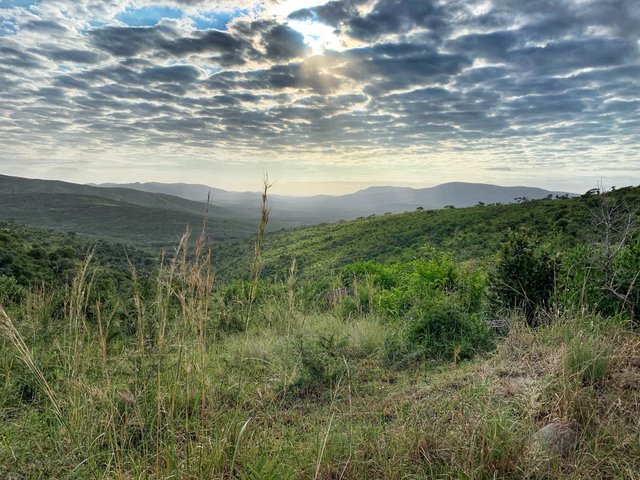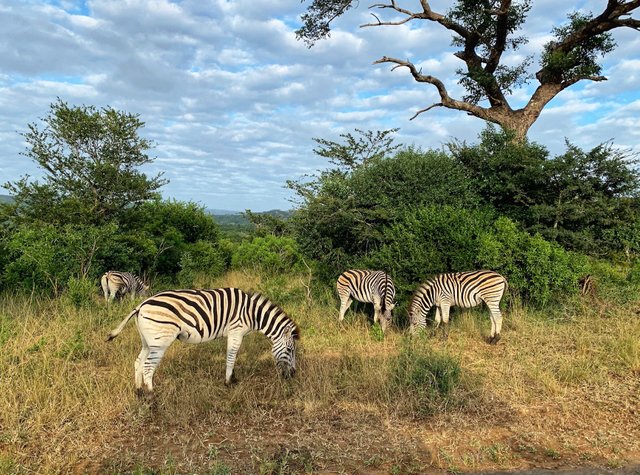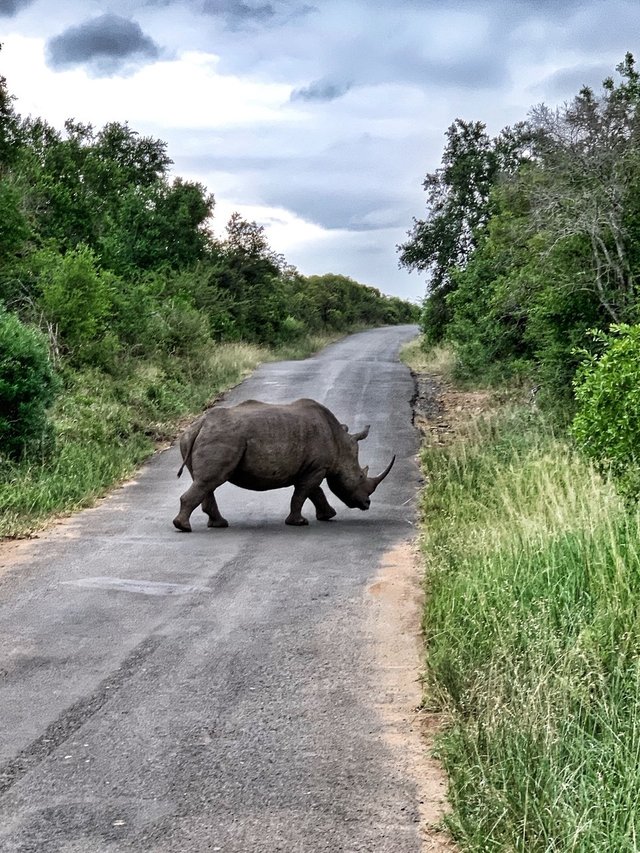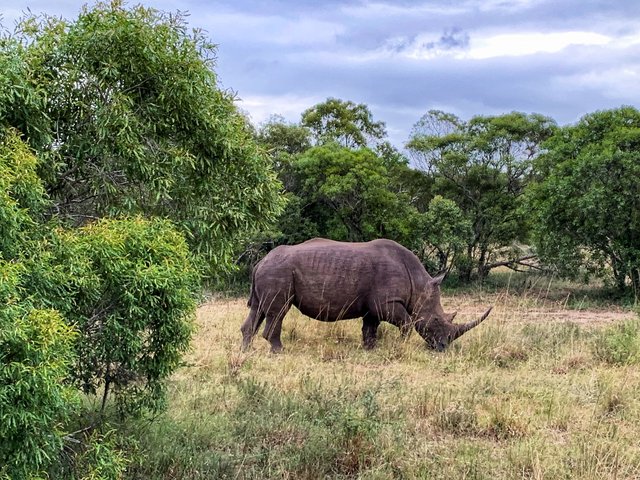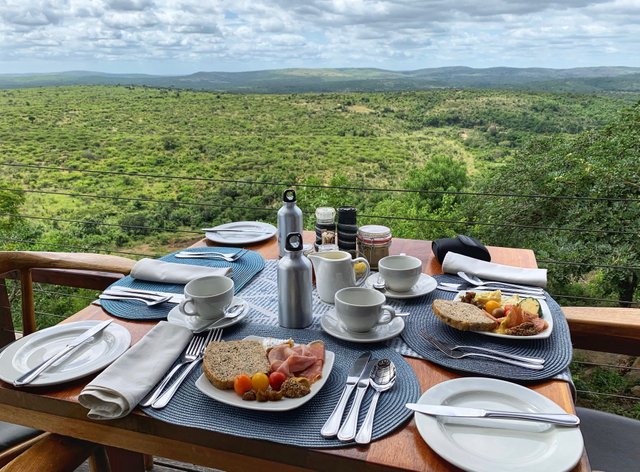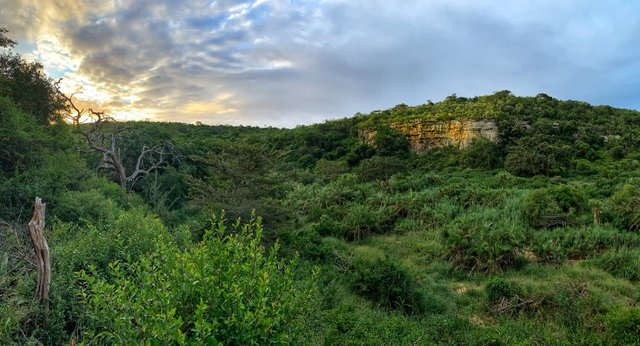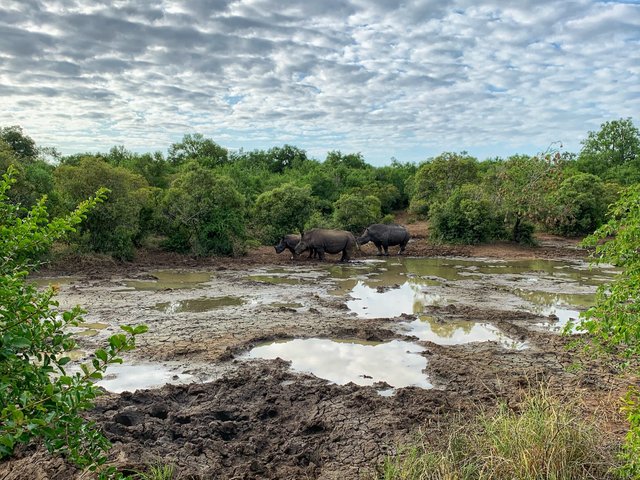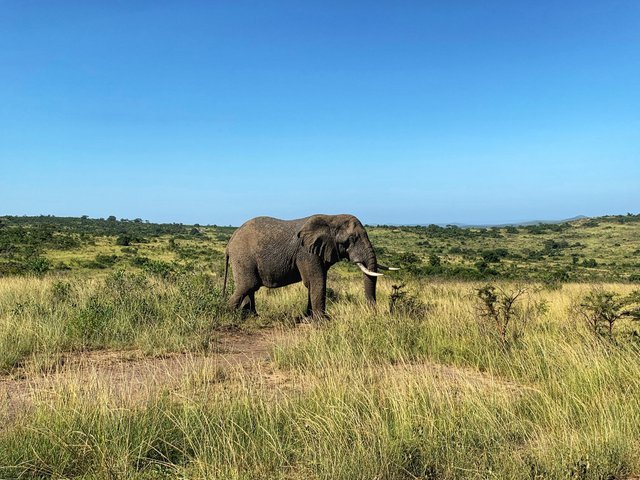Meine Südafrika Rundreise III – Der Hluhluwe Park | My Southafrican Roundtrip III – The Hluhluwe Game Reserve [DE/EN]
Servus liebe Steemians!
Hi dear Steemians!
Nachdem ich euch in meinem ersten Teil die Panorama Route vorgestellt habe und euch in Teil II von den Tieren aus dem Kruger Nationalpark berichtete, nehme ich euch heute erneut auf eine Reise zu den wilden Tieren Afrikas mit. Dieses Mal in den Hluhluwe Nationalpark.
After I introduced you to the Panorama Route in my first part and told you about the animals from the Kruger National Park in part II, i´ll taking you on another trip to the wild animals of Africa today. This time to the Hluhluwe National Park.
Der Hluhluwe Nationalpark zählt zu den ältesten Wildschutzgebieten Südafrikas und fasst 960 km2 Fläche. 1865 wurden ursprünglich zwei Reservate gegründet, der Hluhluwe und Imfolozi Park, die aber wenig später zusammengelegt wurden. Im Naturreservat befinden sich wie auch im Kruger Nationalpark die „Big Five“, also Löwe, Leopard, Elefant, Büffel und Nashorn. Nachdem ich im Kuger Park bereits alle Tiere bis auf das Nashorn aus nächster Nähe beobachten durfte, konnte ich mir im Hluhluwe Park gute Chancen ausrechnen, da es hier eine größere Nashornpopulation gibt.
The Hluhluwe National Park is one of the oldest game reserves in South Africa and covers 960 km2. In 1865 two reserves were originally founded, the Hluhluwe and Imfolozi Park, but they were merged a little later. The nature reserve, like the Kruger National Park, is home to the "Big Five", lion, leopard, elephant, buffalo and rhino. After I was already allowed to observe all animals except the rhinoceros at close range in the Kuger Park, I could calculate good chances in the Hluhluwe Park, because there is a larger rhinoceros population here.
Wir verbrachten unseren Aufenthalt in der Rhino Ridge Safari Lodge, wo wir auch den Ausgangspunkt unserer Safaritouren hatten. Die Lodge war sehr hochwertig ausgestattet und lag mitten im Nationalpark ohne größeren Schutz vor Wildtieren, deshalb wurde man im Dunklen auch immer von einem Wächter vom Hauptgebäude zu seiner Lodge begleitet. Vorkommnisse gab es allerdings noch nie, da die Wildtiere den Menschen grundsätzlich scheuen.
Der Tagesablauf war vom Hotel organisiert, wobei die Safaris immer die Hauptattraktion des Tages waren. Um 5 Uhr Morgens ging´s mit dem Jeep los in die Wildnis und unsere fachkundiger Tourguide erklärte uns alles über die Welt der Tiere in Afrikas Savannen. Danach stand das ausführliche Frühstück am Programm, ehe man sich über Tags am Pool ausruhen konnte. Am späten Nachmittag fand dann eine Abendsafari statt, bei der man den traumhaften Sonnenuntergang am afrikanischen Horizont genießen konnte. Am Abend folgte schließlich ein reichhaltiges Menü mit afrikanischen Spezialitäten.
We spent our stay in the Rhino Ridge Safari Lodge, where we also had the starting point of our safari tours. The lodge was very well equipped and was situated in the middle of the national park without any protection from wild animals. Therefore, in the dark, a guard always accompanied us from the main building to our lodge. But there have never been incidents, as the wild animals basically shy away from the people.
The daily routine was organized by the hotel, whereby the safaris were always the main attraction of the day. At 5 o'clock in the morning we started with the jeep into the wilderness and our expert tour guide explained us everything about the world of animals in Africa's savannahs. Afterwards the extensive breakfast was on the program, before we could relax at the pool for the day. In the late afternoon we went on an evening safari, where we could enjoy the beautiful sunset on the African horizon. Finally, in the evening, a rich menu with African specialities followed.
Wir hatten auch wieder unzählige Tiere entdeckt, die wir mit großem Respekt vom Safariwagen aus beobachteten. Und dann stand es plötzlich vor uns, das mächtige Spitzmaulnashorn, mitten auf der asphaltierten Straße. Wir hielten naturgemäß Abstand und sahen diesem beeindruckenden Tier dabei zu wie es sich unbeirrt und völlig friedlich der Straße entlang bewegte. Nashörner können übrigens nur rund 4-5 Meter weit sehen. Sie nehmen ihre Umgebung hauptsächlich über Geräusche wahr. Wenig später entdeckten wir noch eine ganze Nashornherde samt Babys.
We had again discovered countless animals, which we watched with great respect from the safari car. And then suddenly it stood in front of us, the mighty black rhino, in the middle of the paved road. We naturally kept our distance and watched this impressive animal move unperturbed and completely peacefully along the road. By the way, rhinos can only see about 4-5 meters away. They perceive their surroundings mainly through sounds. A little later we discovered a whole herd of rhinos with thair babies.
Meine Mission war also erfüllt. Ich hatte das große Glück die „Big Five“ Afrikas zu entdecken und durfte sie sogar aus nächster Nähe beobachten. Eines blieb uns im Hluhluwe Park allerdings enthalten. Zwar sahen wir wieder unzählige Tiere, darunter Elefanten, Giraffen, Hyänen, Hippos, Krokodile, Vögel, Affen, Warzenscheine und vieles mehr, aber die Katzen ließen sich hier leider nicht blicken. Wir erfuhren vom Safariguid allerdings, dass es hier nur sehr wenige Löwen, Leoparden und kaum Geparde gibt, weshalb man schon großes Glück haben müsse, um diese zu sichten.
Meine nächste Station führte mich an die östliche Küste Südafrikas nach St. Lucia, wo zum ersten Mal im Indischen Ozean baden ging und die großen Hippo-familien im St. Lucia Fluss beobachten durfte. Ich hoffe ihr seid wieder mit dabei!
Liebe Grüße, Lukas.
So my mission was accomplished. I had the great luck to discover the "Big Five" of Africa and was even allowed to observe them at close range. However, one thing was left to us in Hluhluwe Park. Although we saw again countless animals, among them elephants, giraffes, hyenas, hippos, crocodiles, birds, monkeys, warthogs and much more, but unfortunately the cats did not show up here. However, we learned from the safari guide that there are very few lions, leopards and hardly any cheetahs here, so you have to be very lucky to spot them.
My next stop led me to the eastern coast of South Africa to St. Lucia, where I went swimming in the Indian Ocean for the first time and was allowed to observe the big hippo families in the St. Lucia River. I hope you will be there again!
Best wishes, Lukas.
Die Fotos wurden alle von mir selbst aufgenommen und werden durch Anklicken in Großformat angezeigt
The photos were all taken by myself and are shown in large size by clicking on them
